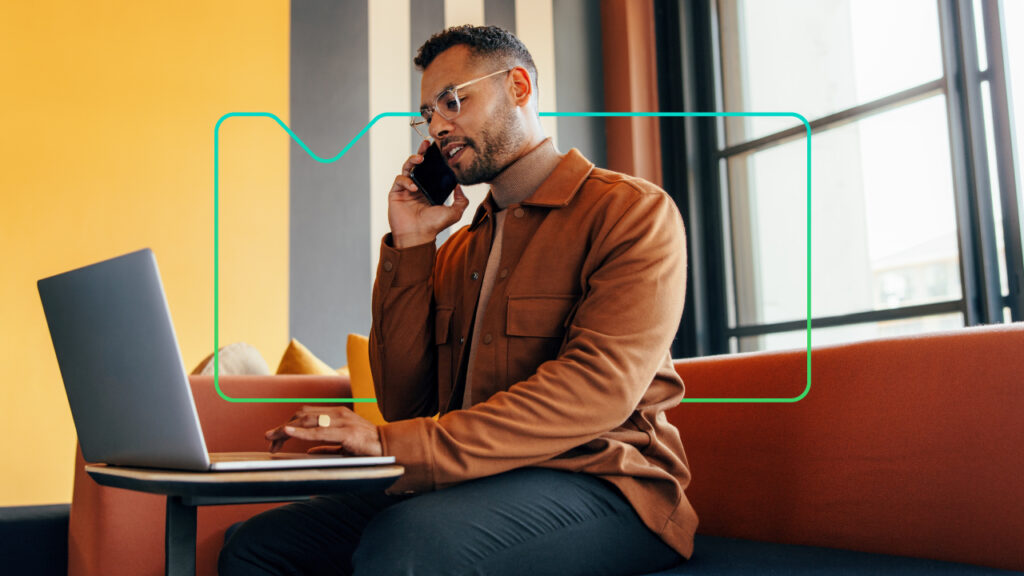30 March 2023
LMS accessibility checklist

Chris Young
UX Consultant
Make sure you’re making your learning accessible to all with our LMS accessibility checklist.
Accessibility is about making your learning accessible to all learners. While it’s often associated with ensuring your site is suitable for users with disabilities or specific needs, accessibility actually relates to user experience. It’s a key aspect of making sure all learners enjoy a useful learning experience when they engage with your LMS.
We’ve put together an LMS accessibility checklist to guide you as you plan to deliver meaningful learning experiences for all learners. This is by no means an exhaustive list. In fact, it’s hard to be exhaustive when it comes to accessibility — there are always improvements and progressions to be made. No, this checklist is about the absolute essentials; the minimum requirements for any organisation taking accessibility seriously.
Provide text alternatives for all non-text content
All photos, videos and other non-text content should have text explaining what it is for visually impaired learners, others using text readers, and in case the multimedia content doesn’t appear for technical reasons. Check how to meet this guideline.
Provide synchronised alternatives for multimedia
Use captions, audio descriptions or other alternative ways of engaging with your multimedia content. Check how to meet this guideline.
Ensure that information and structure can be separated from the presentation
Sometimes the relationships between the structure of an LMS and the information within it are shown through your choice of presentation, such as by using colour, shape, size or visual location. Use a user-agent-supported alternative so that user agents and assistive technologies can understand the correct structure and sequence of the content. Check how to meet this guideline.
Make it easy to distinguish foreground information from its background
Text and diagrams that clash with the background are difficult for learners to read. Make sure foreground information stands out by choosing a luminosity contrast ratio of at least 5:1 or ideally 10:1. Also make it easy to mute unnecessary background audio without turning off all audio. Check how to meet this guideline.
Make all functionality operable via a keyboard interface
A learner should be able to use your LMS using only a keyboard if necessary. You can allow for the use of a mouse, trackpad and touchscreen, but all functionality ought to be achievable with just a keyboard. Check how to meet this guideline.
Allow users to control time limits on their reading or interaction
Avoid unnecessary time-out functions on your LMS. Allow learners to deactivate, lengthen or extend the time-out setting unless it is absolutely essential to the nature of the activity. Check how to meet this guideline.
Avoid flashing content that could trigger seizures in some users
Strobing and other flash effects can cause some users to experience seizures. Eliminate this risk by avoiding any content or components that flash more than three times in any one second. Check how to meet this guideline.
Make it easy to find and navigate content with clear menus and titles
Titles, headings, labels and links are useful ways of helping learners find their way around your LMS. Use descriptive text for each of these, ensuring each logical section of content has its own title from which its purpose is immediately clear. If identical content is repeated across multiple pages, give learners the option of bypassing the repetition. Check how to meet this guideline.
Make it easy for users to avoid and correct mistakes
Inputting errors happen to us all. Help your learners to avoid and correct mistakes that happen during inputting and not because they didn’t know the answer. This includes making actions reversible and letting learners check, review and confirm or correct the information they entered before submitting it. Check how to meet this guideline.
Make text content readable and understandable
Assistance tools should be able to easily detect the primary language of your content. Written content should be easily understood, including avoiding unusual phrases, idioms and jargon, abbreviations, and text that requires a reading ability above lower secondary education level to be understood. Alternatively, definitions, expanded forms or supplemental content should be available to meet these objectives. Check how to meet this guideline.
Make the placement and functionality of content predictable
Consistency is key for LMS accessibility. Maintain structure, relative order and context wherever possible so that learners can build an understanding of the flow of your LMS. Check how to meet this guideline.
Support compatibility with user agents and assistive technologies
As we’ve already alluded to, your LMS should be compatible with user agents including assistive technologies. Check how to meet this guideline.
Ensure that content is accessible or provide an accessible alternative
If for any reason you can’t make some of your LMS accessible in accordance with the guidelines above, you should offer an accessible alternative version that is easily available. Check how to meet this guideline.
Are you currently failing our LMS accessibility checklist?
If you know your LMS doesn’t currently meet basic accessibility requirements, talk to us about upgrading to a platform that caters to all of your learners.



